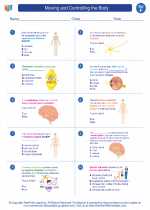Zinc
Zinc is a chemical element with the symbol Zn and atomic number 30. It is a bluish-white, lustrous metal that is commonly used in a variety of applications. Here is a study guide to help you understand the properties, uses, and significance of zinc:
Properties of Zinc
Zinc is a transition metal that is relatively brittle at room temperature but becomes malleable when heated. It has a melting point of 419.5°C and a boiling point of 907°C. Zinc is a good conductor of electricity and exhibits relatively low corrosion rates, making it a valuable material for various industrial purposes.
Uses of Zinc
Zinc is widely used in the production of alloys, particularly with copper to form brass and with other metals to create materials with enhanced properties. It is also a key component in the galvanization process, where zinc coatings are applied to iron or steel to protect against corrosion. Additionally, zinc compounds are utilized in the manufacturing of rubber, paint, inks, and pharmaceuticals.
Significance of Zinc
Zinc is an essential element for all living organisms, playing a crucial role in various biological processes. It is a key component of many enzymes and is involved in the regulation of gene expression, immune function, and wound healing. Adequate zinc intake is important for overall health and well-being.
Study Guide Questions
- What is the chemical symbol for zinc?
- What are some properties of zinc?
- How is zinc used in industry?
- What is the significance of zinc in biological systems?
Explore these questions to deepen your understanding of zinc and its importance in various fields.
.◂Science Worksheets and Study Guides Sixth Grade. Moving and Controlling the Body

 Worksheet/Answer key
Worksheet/Answer key
 Worksheet/Answer key
Worksheet/Answer key
 Vocabulary/Answer key
Vocabulary/Answer key
 Vocabulary/Answer key
Vocabulary/Answer key
 Vocabulary/Answer key
Vocabulary/Answer key
